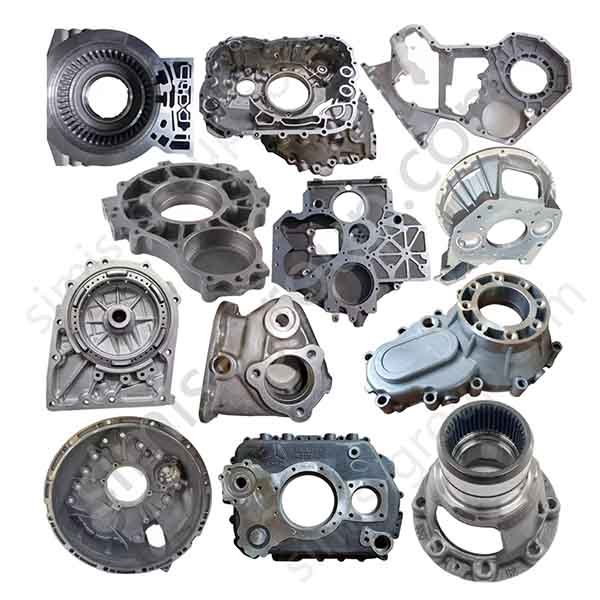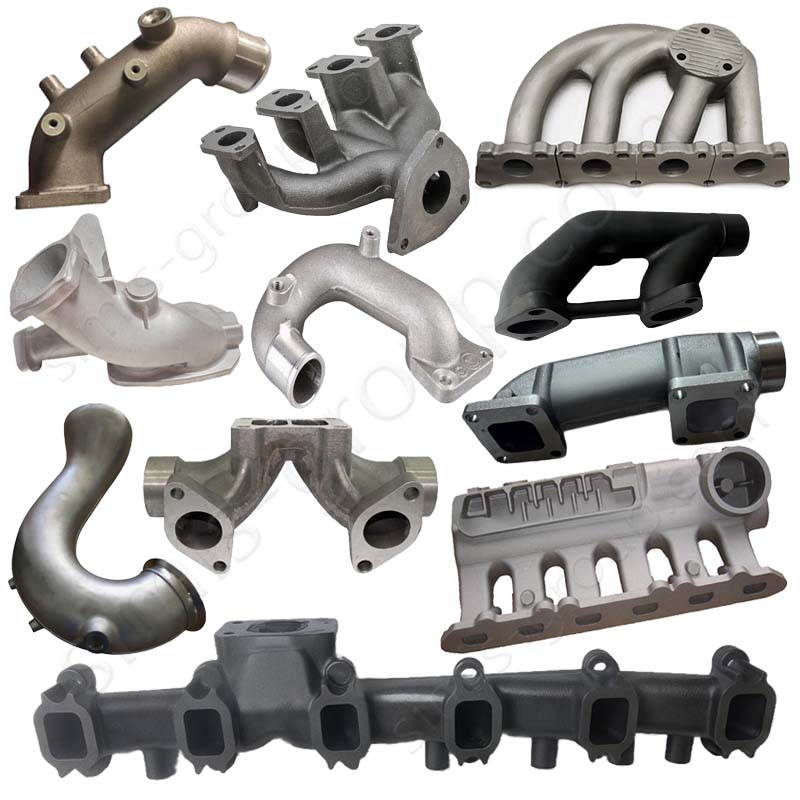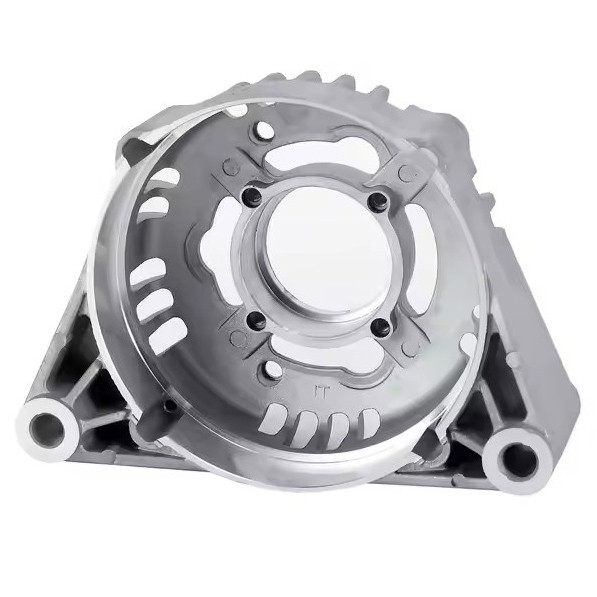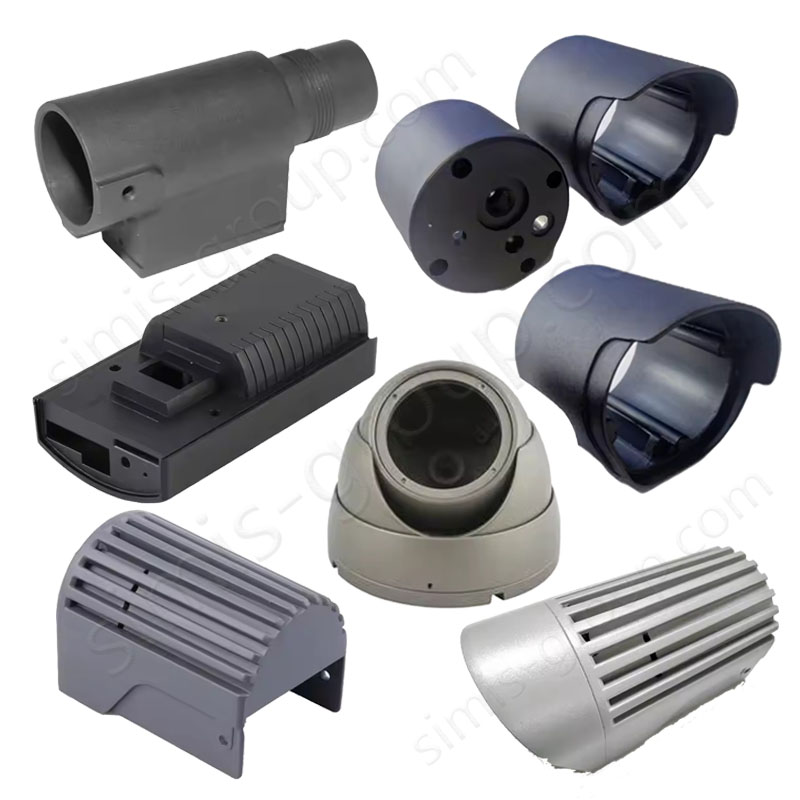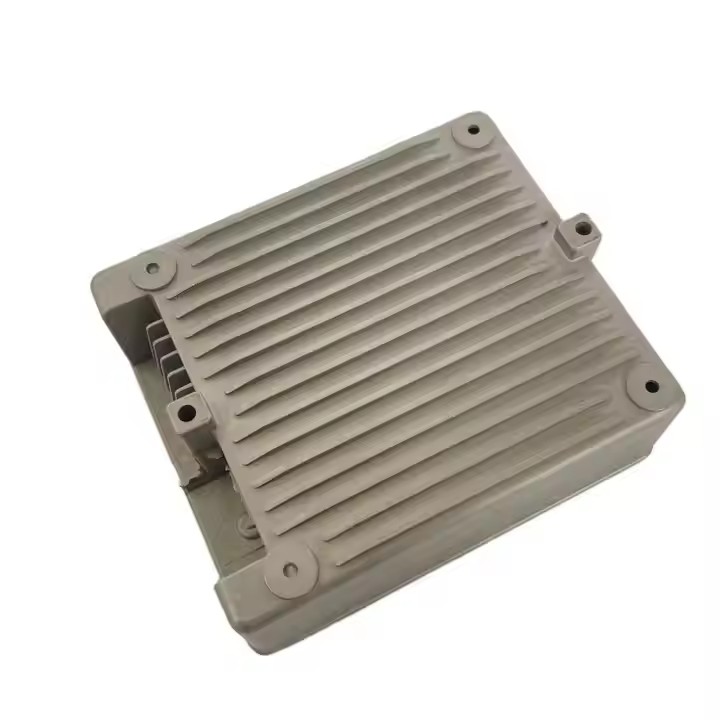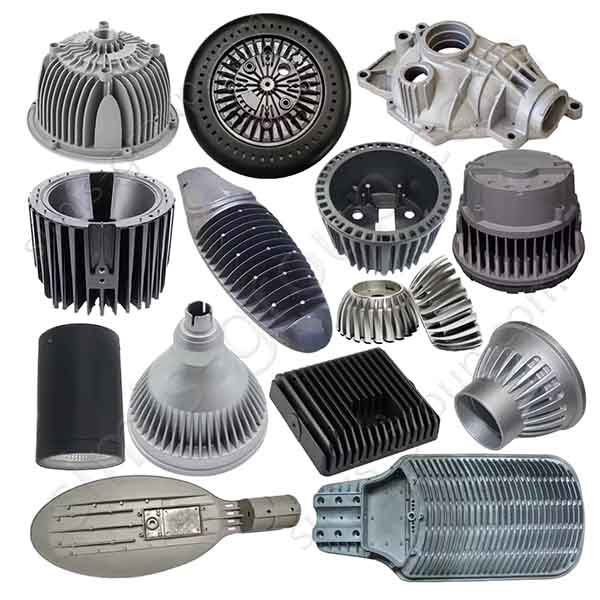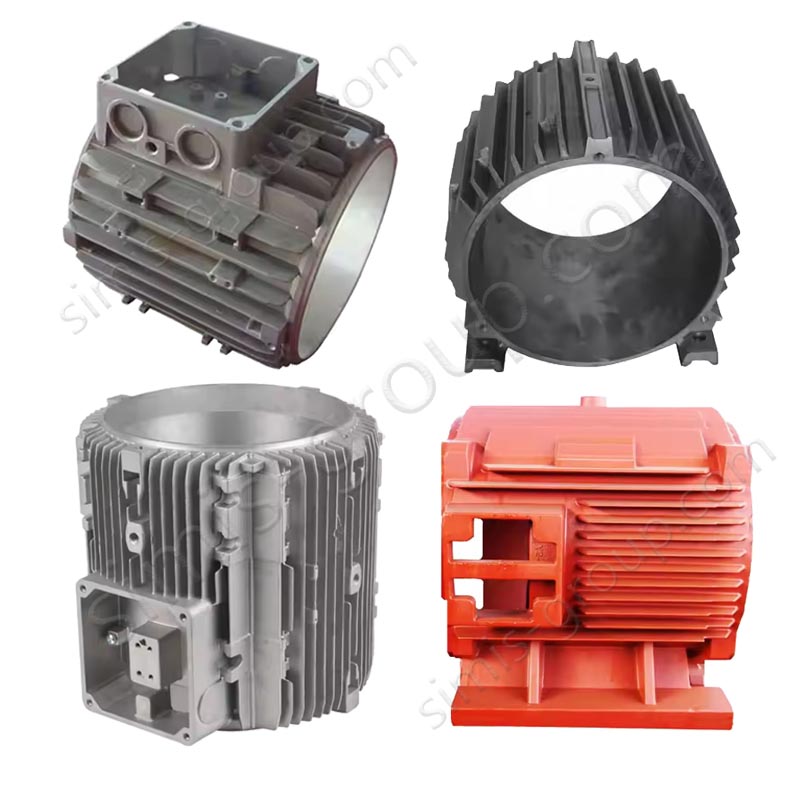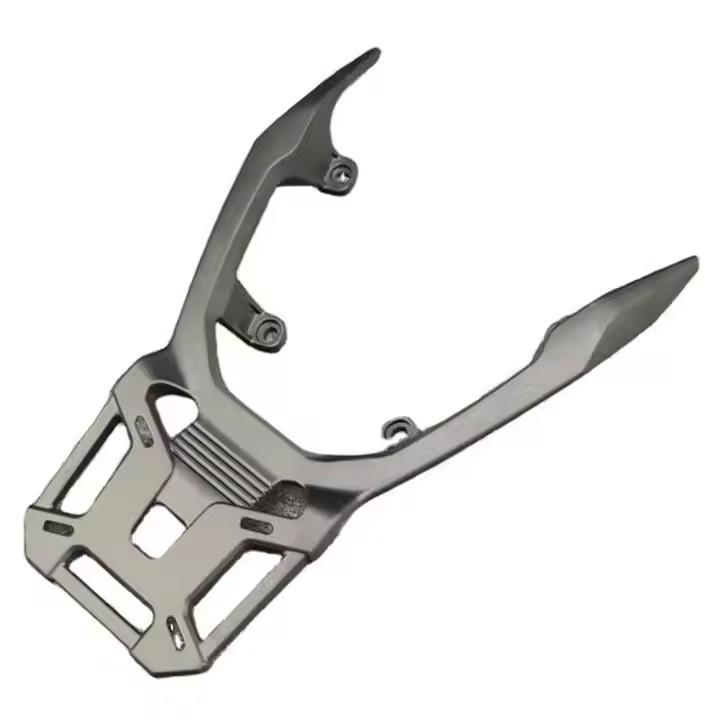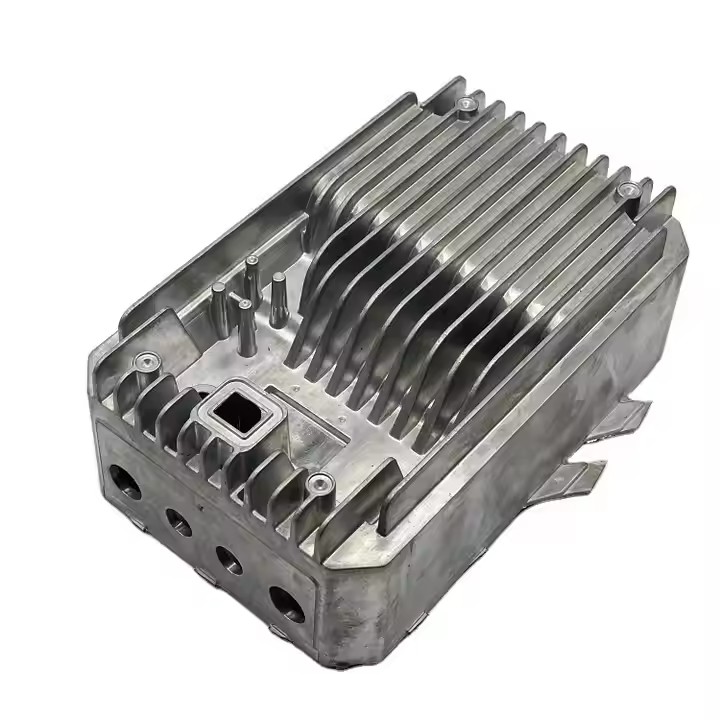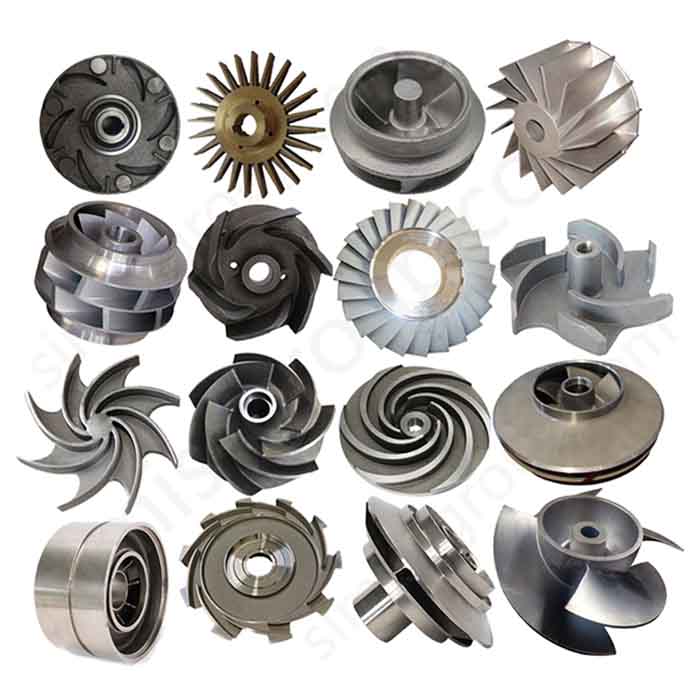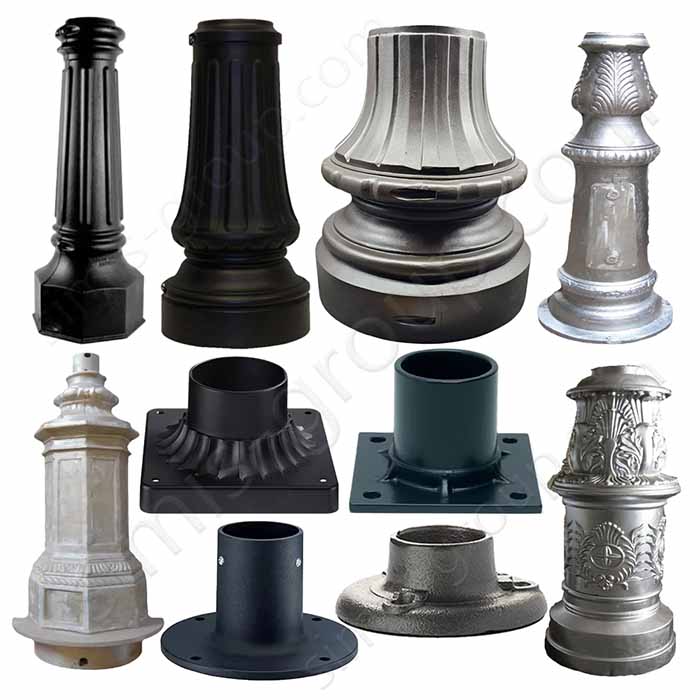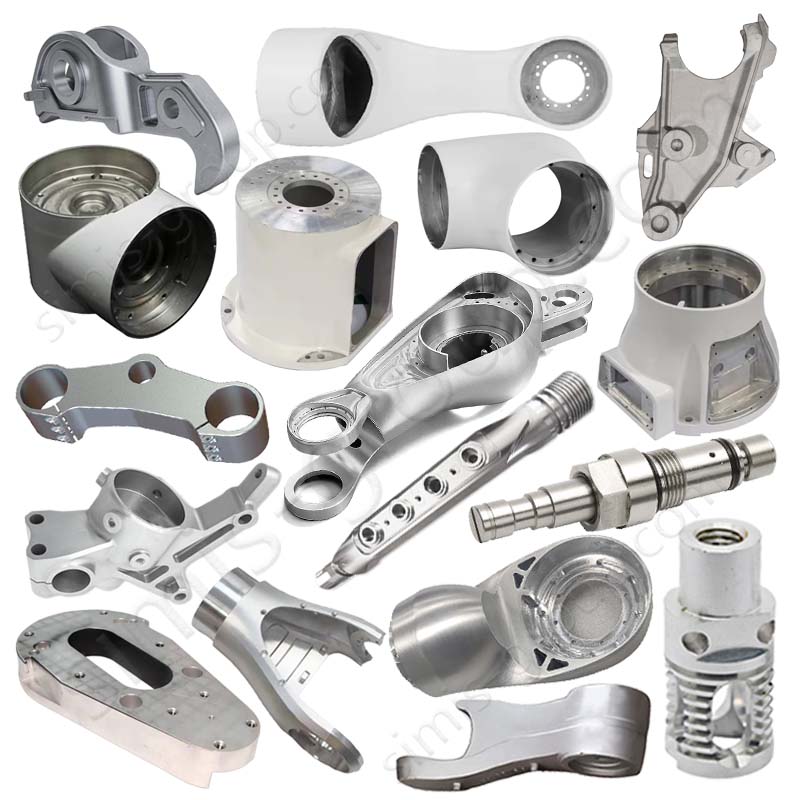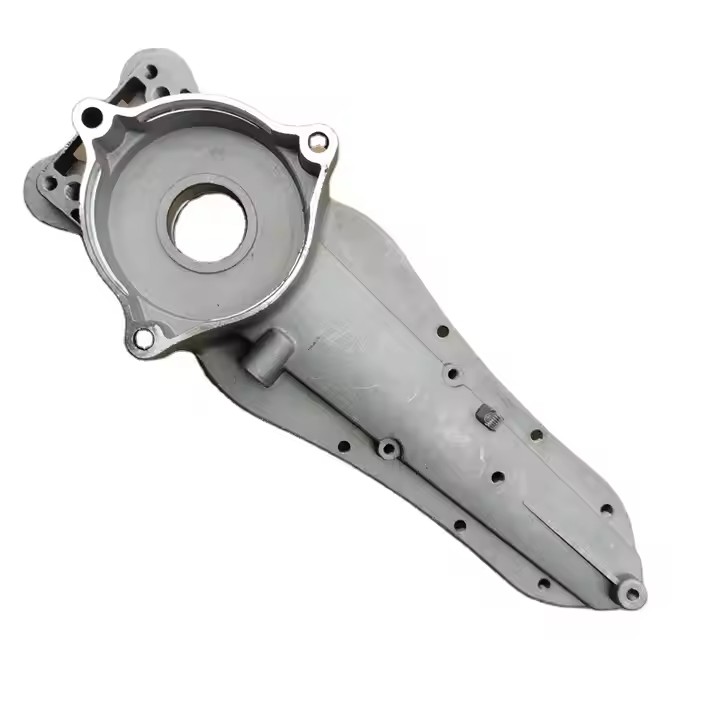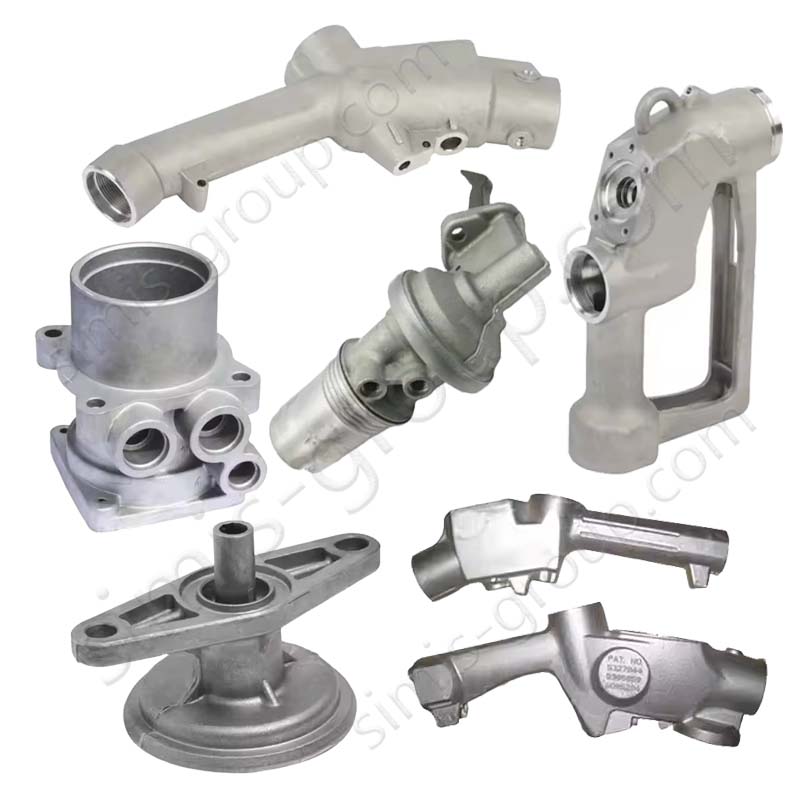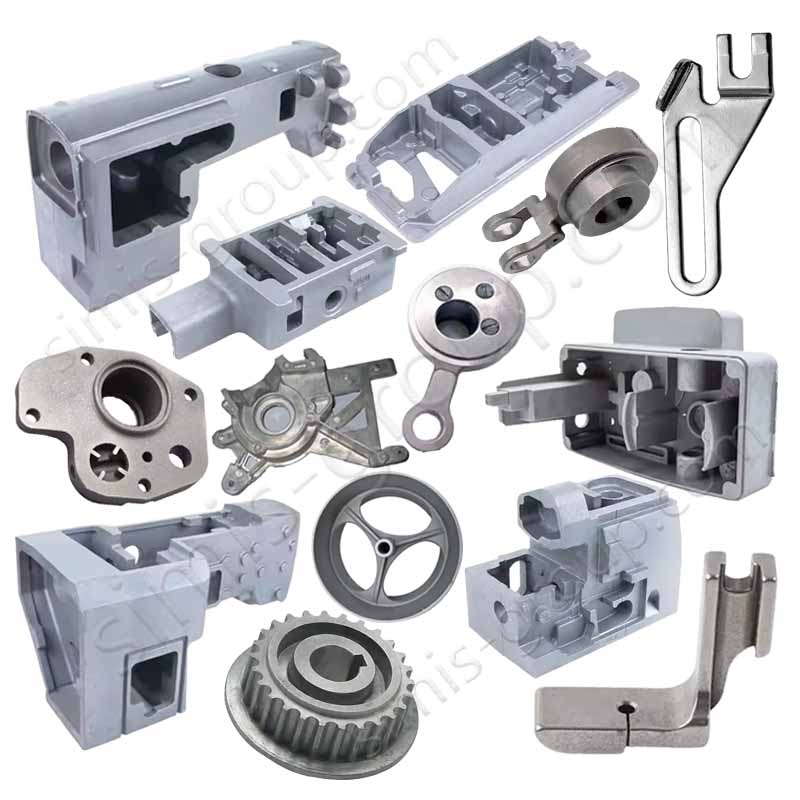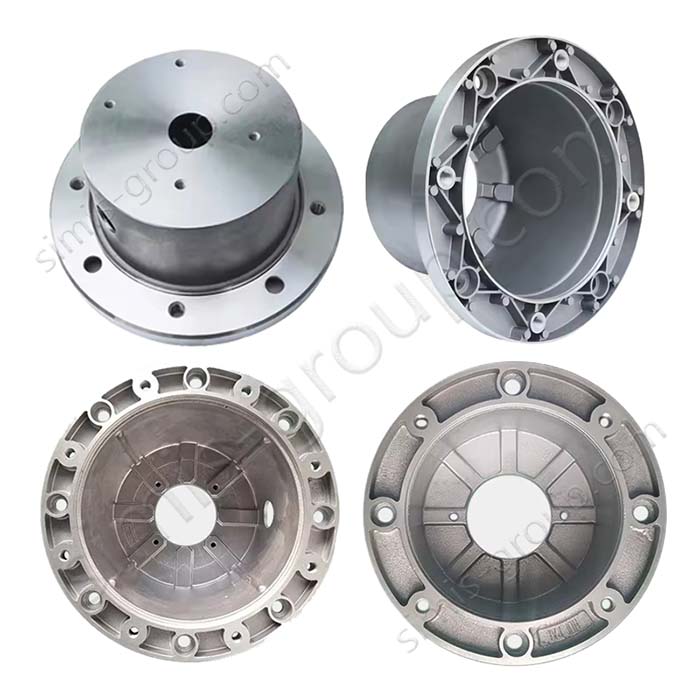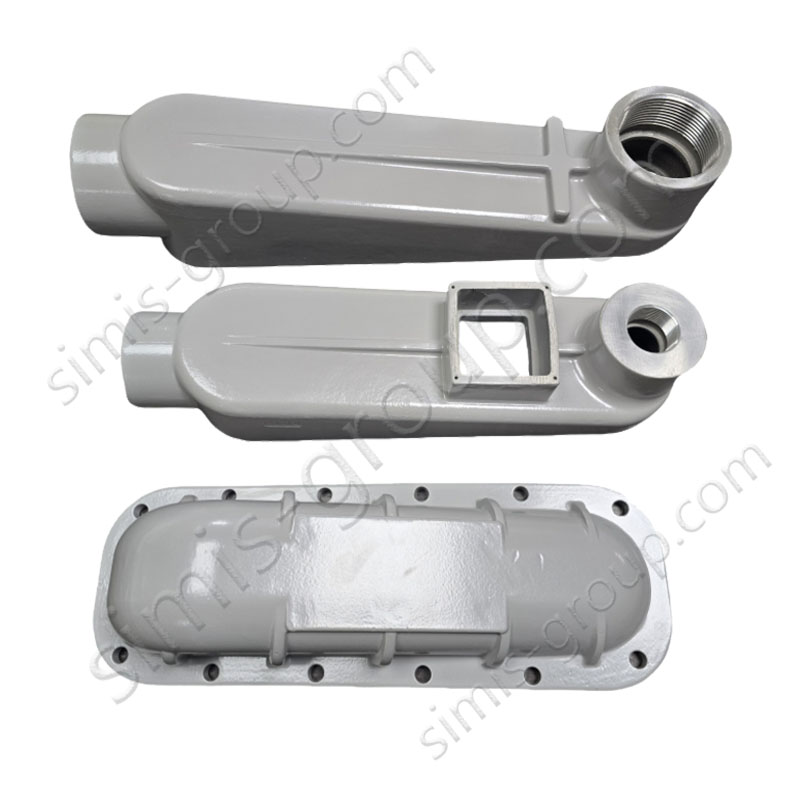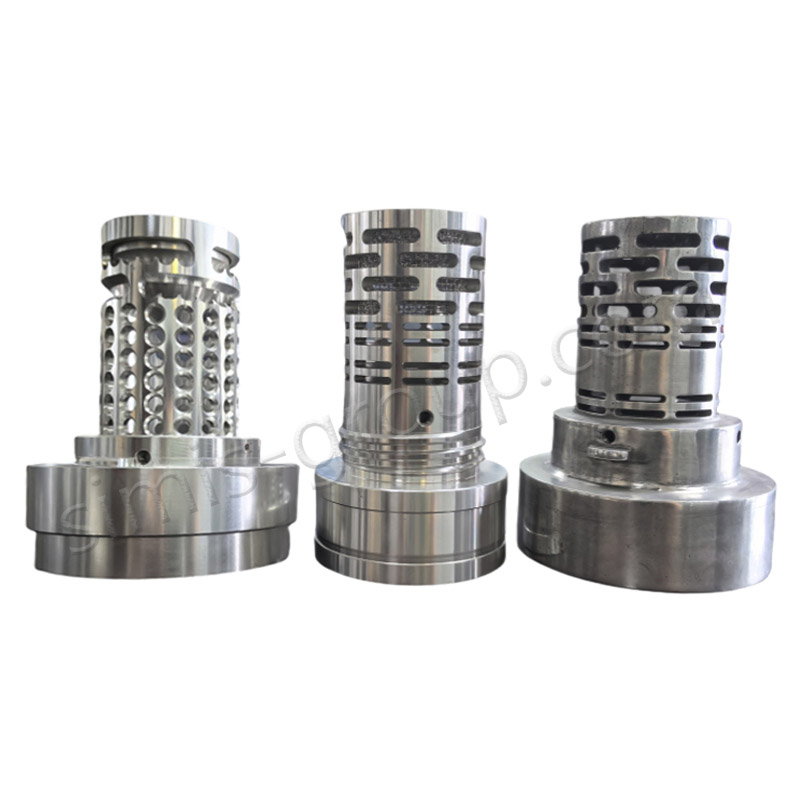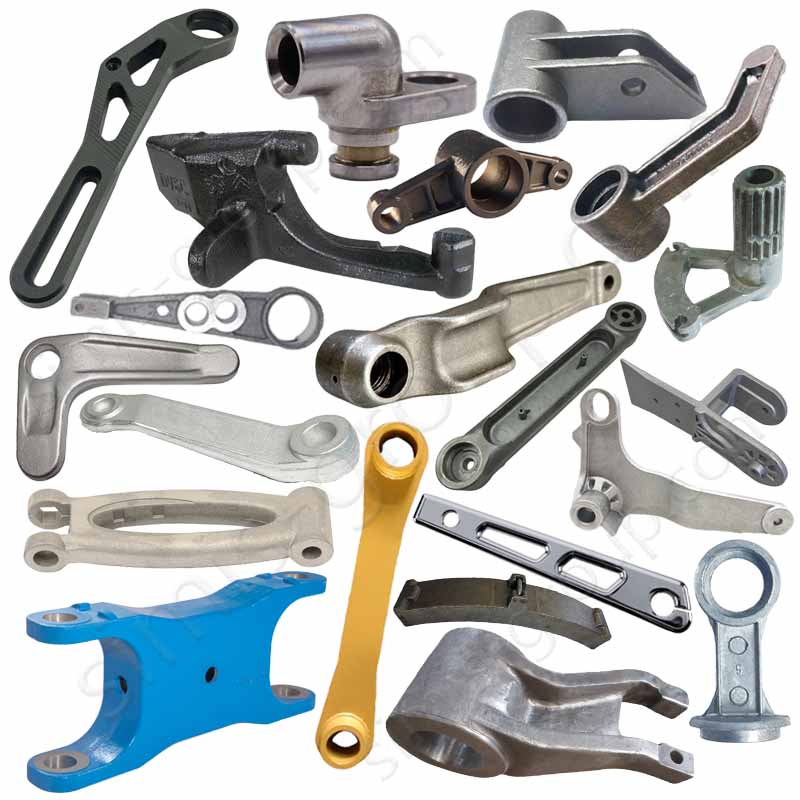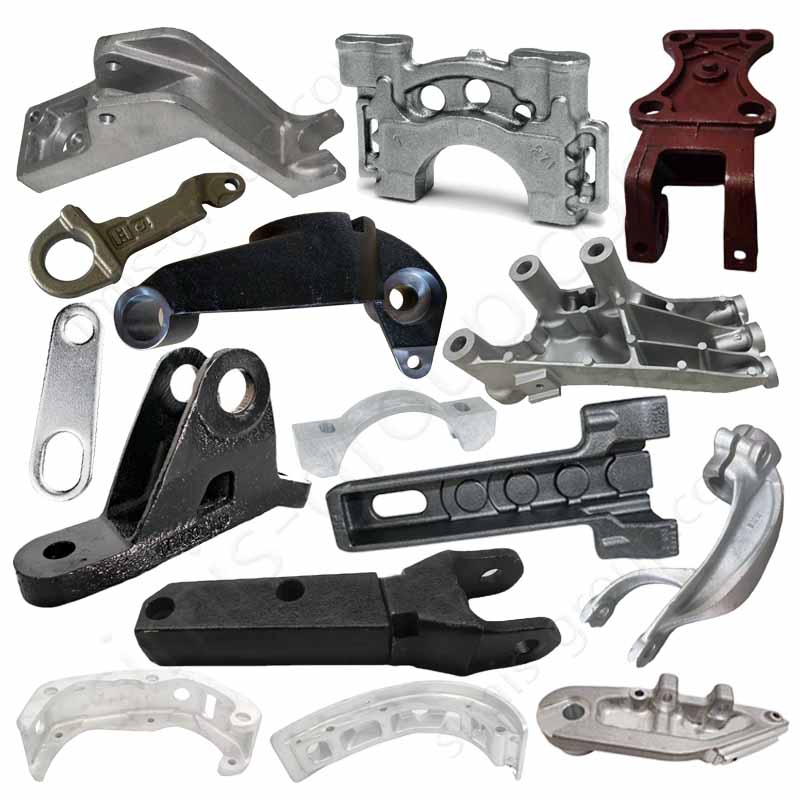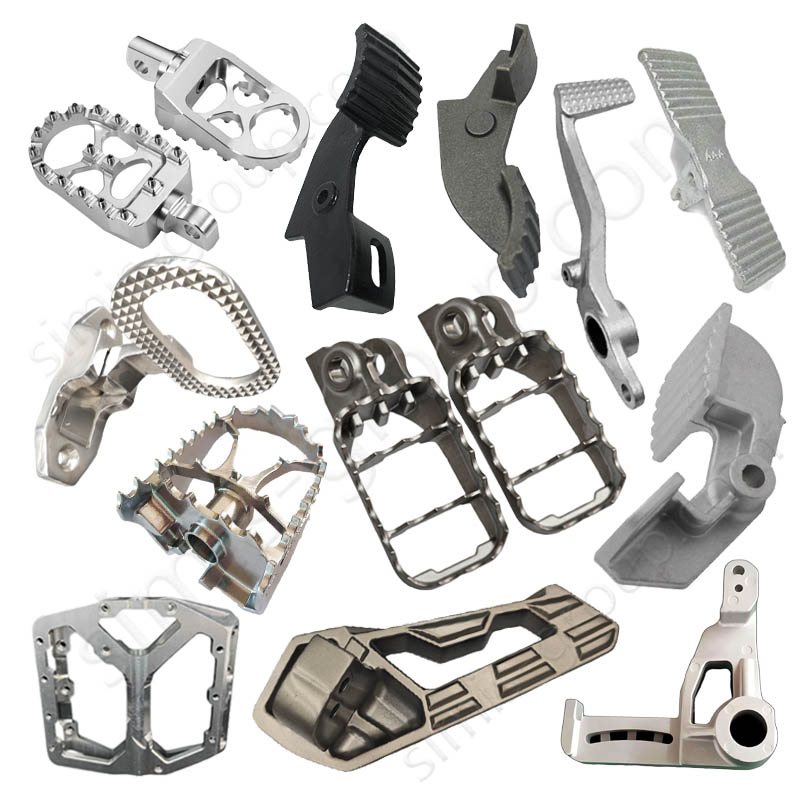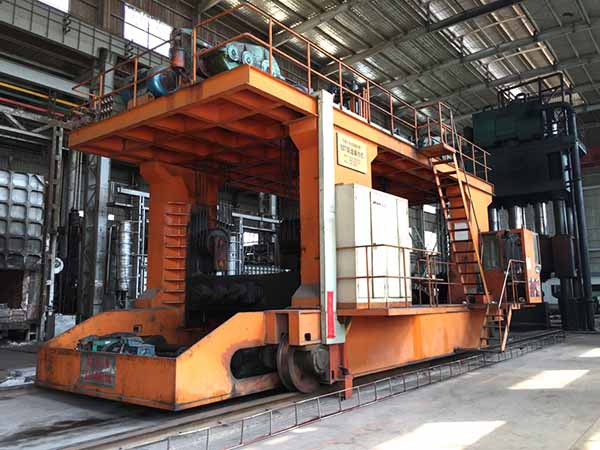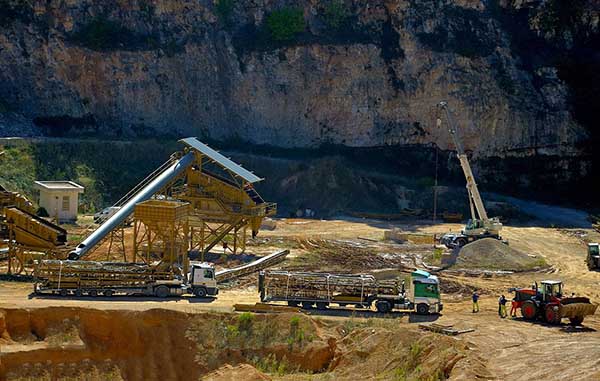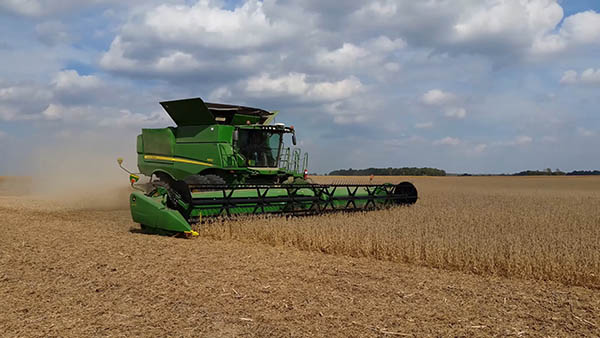Manufacturing Process of Cast Aluminum Parts
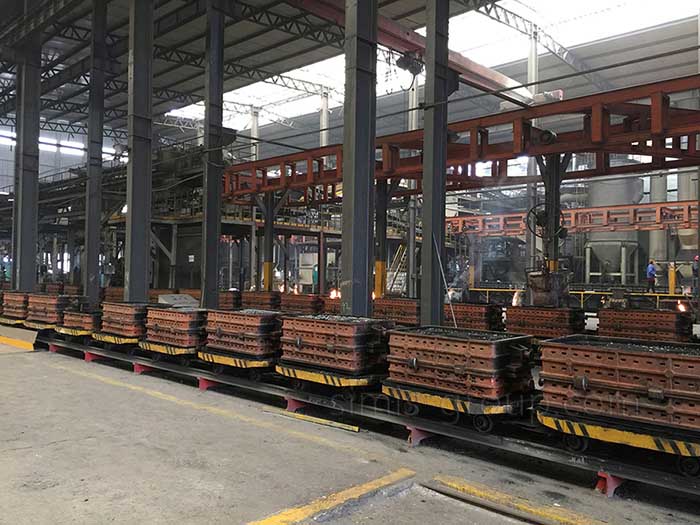
Aluminum Sand Casting
Aluminum sand casting uses sand to make the mold. We then pour hot, liquid aluminum into this mold. After the metal cools, workers take out the casting. They clean and finish the final part.
Low Mold Cost: Making the sand mold is cheap. Plus, we can reuse the sand many times.
Large Parts: This method is great for casting big and medium-sized aluminum parts. It handles complex shapes well.
Flexible Production: It works great for small jobs, mid-size orders, or very large production runs.

Aluminum Die Casting
Aluminum die casting uses high pressure. It forces hot, liquid aluminum into a metal mold very quickly. The metal fills the mold fast and hardens. This method is great for making many thin-walled, complex, and high-precision parts.
Smooth Finish: Aluminum parts come out with a very smooth surface and high size accuracy.
Fast Production: The time needed is very short, making it perfect for mass production.
Less Metal Loss: Very little metal is lost. The cooling inside the mold happens quickly.
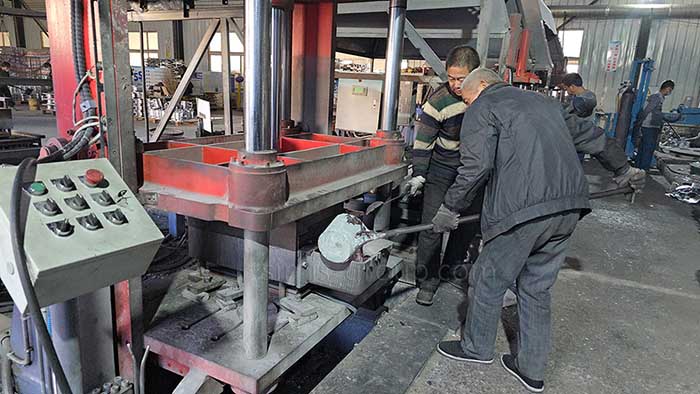
Aluminum Gravity Casting
Aluminum gravity casting often uses metal molds. The liquid aluminum fills the mold and then hardens under its own weight. This process works well for parts that are medium complex.
Low Mold Cost: The cost to make the mold is low. This makes it good for small to medium production runs.
Larger Parts: We can make larger aluminum alloy parts this way. They also have better density.
Affordable Parts: The final parts made by this process are relatively cheap.
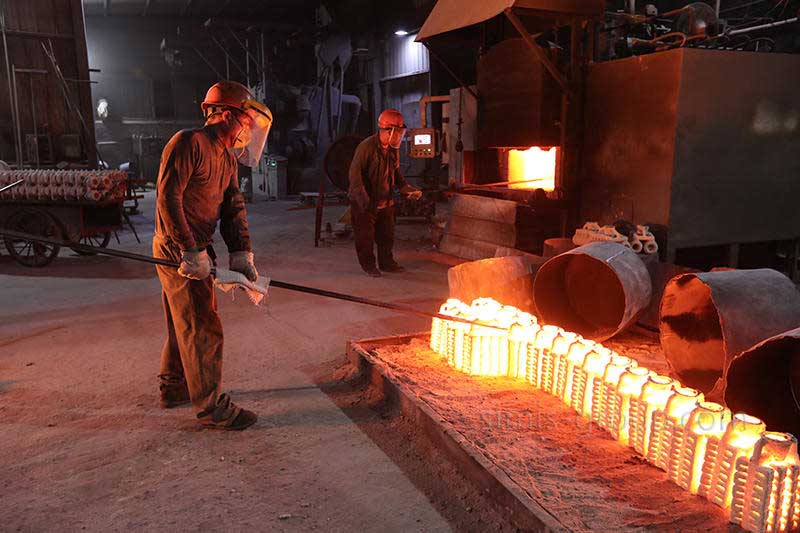
Aluminum Investment Casting
Aluminum investment casting makes high-quality parts. It uses molds made from wax or other items that can melt away. This method is often used for aluminum parts that have complex shapes and must be highly precise.
High Surface Quality: The parts come out with a very smooth finish.
Less Finishing Work: You won't need much post-processing, saving time and cost.
Best for Small Runs: It works well for small jobs that need high precision aluminum parts.
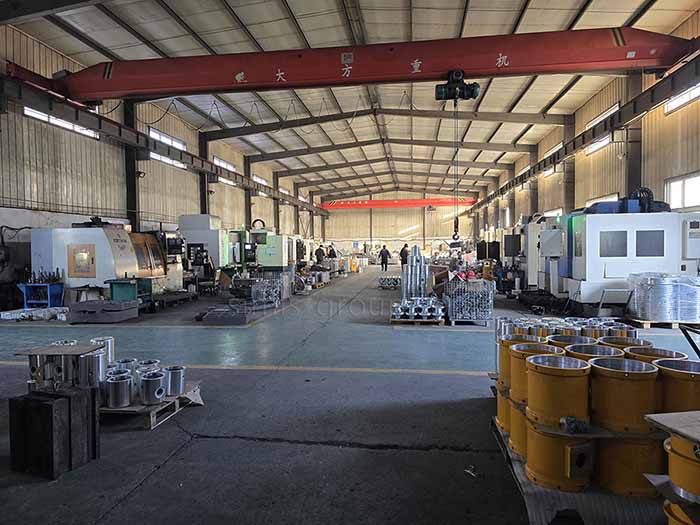
Machining
Machining is a final step for aluminum parts. It uses fine tools to improve the castings. This work boosts the part's accuracy, makes the surface much cleaner, and improves what the casting can do.
It makes the final look better.
It improves the aluminum part's structure and function.
It lets us make thin walls and complex shapes.
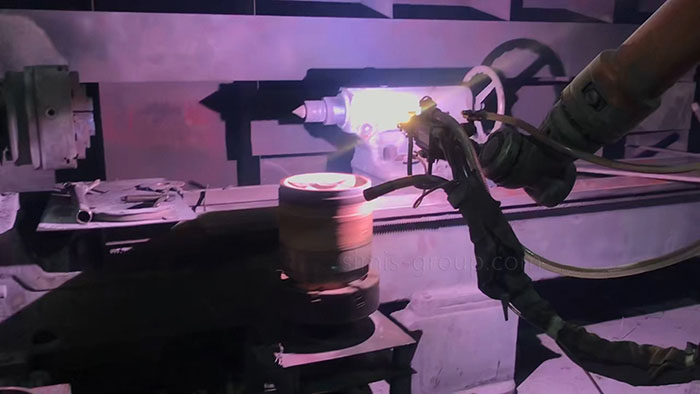
Surface Treatment
Surface treatment changes the outside of aluminum castings. It uses physical, chemical, or mechanical methods. This work boosts the casting's quality. It also makes parts last longer and improves how they look and function.
It makes the surface harder.
It improves the part's look and boosts its size accuracy.
It improves adhesion and resistance to corrosion (rust).
Custom Aluminum Castings by Simis Foundry
Different Materials of Aluminum Alloy Castings
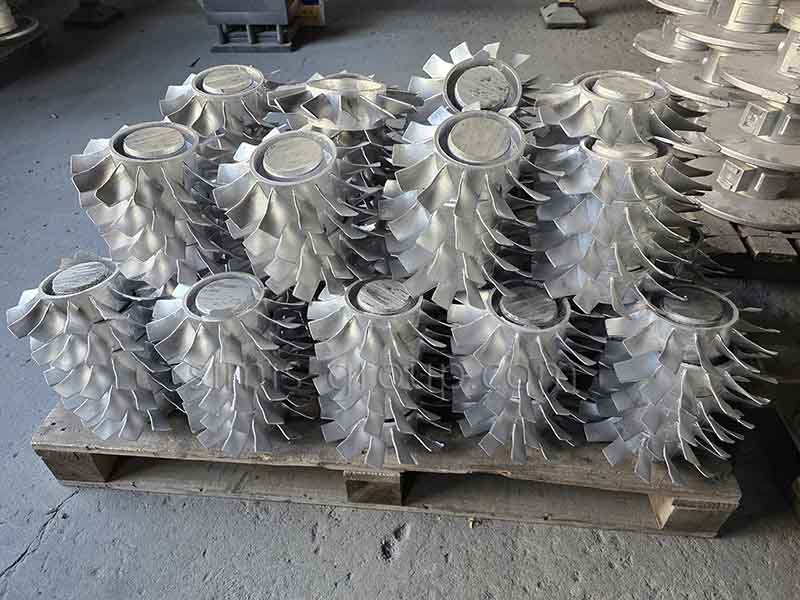
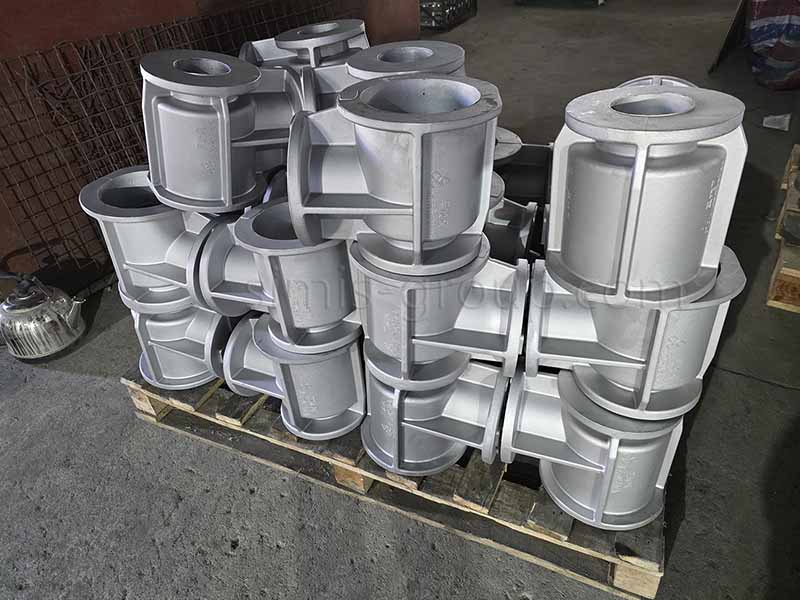
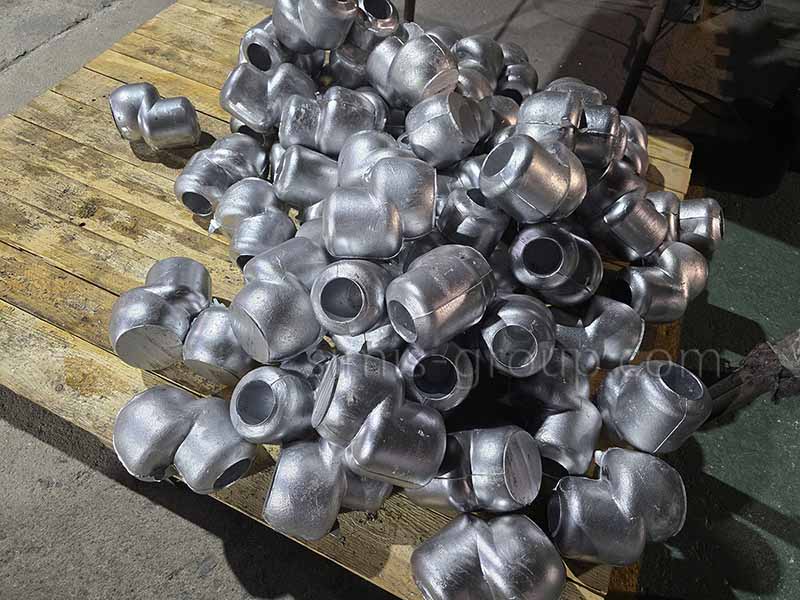
Aluminum-Silicon Alloy Casting
Aluminum-Silicon alloys make light, complex parts. They offer great casting ability and a strong ratio of strength to weight. Adding silicon to aluminum makes the liquid metal flow better, lowers its melting point, and cuts down on shrinkage. Al-Si alloys are the most common cast aluminum materials across all industries.
Al-Si Alloy Castings from Simis Aluminum Foundry:
Engine cylinder heads, intake manifolds, and pistons;
Transmission cases and housings;
Pump bodies and impellers;
Building fittings;
Electronic boxes and heat sinks;
Car wheels and structure parts.
Simis can cast Al-Si alloy types:
Hypoeutectic Alloys (Silicon 5% - 10%): Structural car parts (cylinder heads), aerospace parts, and high-strength machine parts.
Eutectic Alloys (Silicon around 11% - 13%): Complex, thin-walled castings. They are great for parts needing a tight seal, like pump and valve bodies.
Hypereutectic Alloys (Silicon over 14%): Engine pistons, cylinder liners, and brake rotors. These parts need high wear resistance and stability in hot conditions.
Aluminum-Copper Alloy Casting
Aluminum-Copper alloys produce high-strength components. These alloys prioritize high strength over ease of casting, positioning them among the strongest cast aluminum materials available. They are highly responsive to heat treatment, which is utilized to optimize their mechanical properties for aerospace and other demanding, high-performance applications.
Al-Cu Alloy Castings from Simis Aluminum Foundry:
Aircraft structural fittings and brackets;
High-performance car suspension parts;
Cylinder heads for air-cooled engines;
Strong robotic arms and machine parts.
Simis can cast Al-Cu alloy types:
Binary Al-Cu Alloys: General high-strength parts, structural components, and parts needing good toughness.
Al-Cu with Silicon Added: Complex, high-strength parts, like cylinder heads and crankcases.
Highest-Strength Al-Cu Alloys (with Mg, Mn, Cd added): Critical aerospace parts. Best for high strength-to-weight ratio jobs.
Aluminum-Magnesium Alloy Casting
Aluminum-Magnesium alloys provide high corrosion resistance, significant ductility, and an excellent surface finish. These properties make them suitable for extensive use in marine, offshore, and chemical processing environments.
Al-Mg Alloy Castings from Simis Aluminum Foundry:
Boat parts and marine hardware;
Gear for chemical plants;
Parts for handling food and drinks;
Building and decorative fittings;
Pressure vessels for corrosive jobs.
Simis can cast Al-Mg alloy types:
Low Magnesium Alloys (Mg 3-5%): General parts needing rust resistance, marine fittings, and food processing gear.
Medium Magnesium Alloys (Mg 5-7%): Structural parts for boats, pump bodies, valve housings, and chemical processing gear.
High Magnesium Alloys (Mg 7-10%): High-strength marine parts, naval architecture, and jobs needing the best rust resistance.
Other Aluminum Alloys Casting
The Simis Aluminum Foundry can cast many other aluminum alloys. These include aluminum-zinc, aluminum-manganese, and aluminum-titanium alloys. They are used for parts that need great high-temperature performance, controlled heat expansion, or a unique mix of features. This meets the needs of special jobs across many industrial fields.
Specialty Castings from Simis Aluminum Foundry:
Pistons and cylinder heads for engines;
Precise systems for optics and instruments;
Bearing sleeves and bushings;
Aerospace parts that need heat stability;
Electronic boxes needing specific heat management.
Simis can cast specialty alloy types:
Al-Sn Bearing Alloys: Engine connecting rod bearings, main bearings, and other high-load sliding parts.
Al-Zn Alloys: Building fittings, decorative parts, and general machine components.
High Iron and Manganese (Heat-Resistant): Car turbo housings, piston crowns, and other parts that work in high heat.
Al-Mn Alloys: Chemical gear, food handling parts, heat exchangers, marine parts, and building components needing good welding traits.
Aluminum-Silicon Alloy Casting
Aluminum-Silicon alloys make light, complex parts. They offer great casting ability and a strong ratio of strength to weight. Adding silicon to aluminum makes the liquid metal flow better, lowers its melting point, and cuts down on shrinkage. Al-Si alloys are the most common cast aluminum materials across all industries.
Al-Si Alloy Castings from Simis Aluminum Foundry:
Engine cylinder heads, intake manifolds, and pistons;
Transmission cases and housings;
Pump bodies and impellers;
Building fittings;
Electronic boxes and heat sinks;
Car wheels and structure parts.
Simis can cast Al-Si alloy types:
Hypoeutectic Alloys (Silicon 5% - 10%): Structural car parts (cylinder heads), aerospace parts, and high-strength machine parts.
Eutectic Alloys (Silicon around 11% - 13%): Complex, thin-walled castings. They are great for parts needing a tight seal, like pump and valve bodies.
Hypereutectic Alloys (Silicon over 14%): Engine pistons, cylinder liners, and brake rotors. These parts need high wear resistance and stability in hot conditions.
Aluminum-Copper Alloy Casting
Aluminum-Copper alloys produce high-strength components. These alloys prioritize high strength over ease of casting, positioning them among the strongest cast aluminum materials available. They are highly responsive to heat treatment, which is utilized to optimize their mechanical properties for aerospace and other demanding, high-performance applications.
Al-Cu Alloy Castings from Simis Aluminum Foundry:
Aircraft structural fittings and brackets;
High-performance car suspension parts;
Cylinder heads for air-cooled engines;
Strong robotic arms and machine parts.
Simis can cast Al-Cu alloy types:
Binary Al-Cu Alloys: General high-strength parts, structural components, and parts needing good toughness.
Al-Cu with Silicon Added: Complex, high-strength parts, like cylinder heads and crankcases.
Highest-Strength Al-Cu Alloys (with Mg, Mn, Cd added): Critical aerospace parts. Best for high strength-to-weight ratio jobs.
Aluminum-Magnesium Alloy Casting
Aluminum-Magnesium alloys provide high corrosion resistance, significant ductility, and an excellent surface finish. These properties make them suitable for extensive use in marine, offshore, and chemical processing environments.
Al-Mg Alloy Castings from Simis Aluminum Foundry:
Boat parts and marine hardware;
Gear for chemical plants;
Parts for handling food and drinks;
Building and decorative fittings;
Pressure vessels for corrosive jobs.
Simis can cast Al-Mg alloy types:
Low Magnesium Alloys (Mg 3-5%): General parts needing rust resistance, marine fittings, and food processing gear.
Medium Magnesium Alloys (Mg 5-7%): Structural parts for boats, pump bodies, valve housings, and chemical processing gear.
High Magnesium Alloys (Mg 7-10%): High-strength marine parts, naval architecture, and jobs needing the best rust resistance.
Other Aluminum Alloys Casting
The Simis Aluminum Foundry can cast many other aluminum alloys. These include aluminum-zinc, aluminum-manganese, and aluminum-titanium alloys. They are used for parts that need great high-temperature performance, controlled heat expansion, or a unique mix of features. This meets the needs of special jobs across many industrial fields.
Specialty Castings from Simis Aluminum Foundry:
Pistons and cylinder heads for engines;
Precise systems for optics and instruments;
Bearing sleeves and bushings;
Aerospace parts that need heat stability;
Electronic boxes needing specific heat management.
Simis can cast specialty alloy types:
Al-Sn Bearing Alloys: Engine connecting rod bearings, main bearings, and other high-load sliding parts.
Al-Zn Alloys: Building fittings, decorative parts, and general machine components.
High Iron and Manganese (Heat-Resistant): Car turbo housings, piston crowns, and other parts that work in high heat.
Al-Mn Alloys: Chemical gear, food handling parts, heat exchangers, marine parts, and building components needing good welding traits.
Application of Aluminum Alloy Castings
Aluminum Alloy Castings Company's Custom Steps
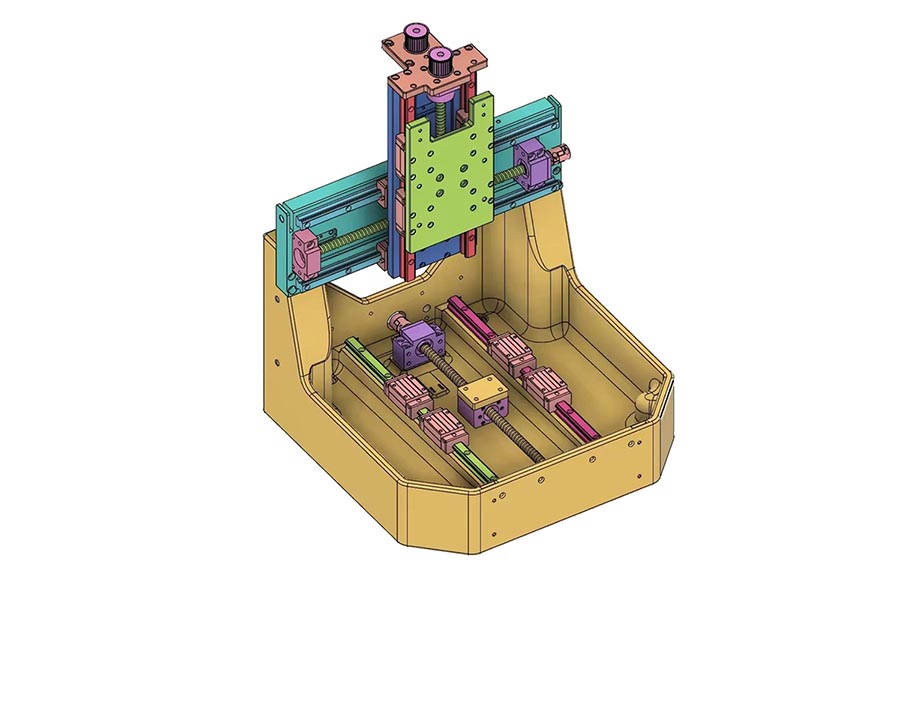
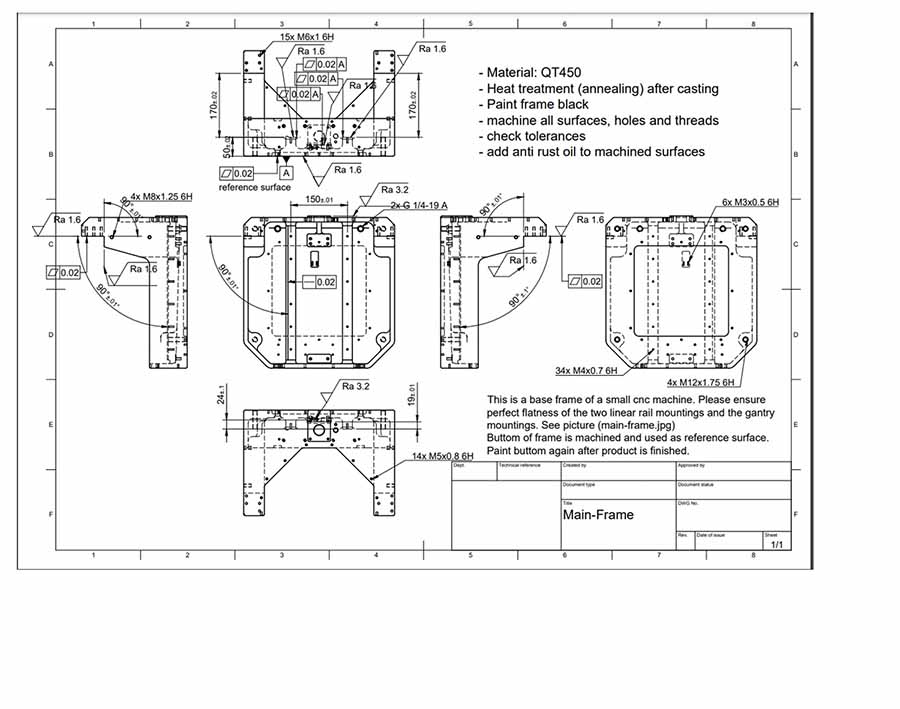

Confirm Manufacturing Requirements for Cast Aluminum Parts
Design Review and Samples
Simis engineers first check the 3D and plane drawings. This makes sure your design is ready for manufacturing. If you have a sample part, we can make the new parts based on that sample.
Define Part Requirements
We confirm what the part needs to do. This includes things like its strength, hardness, wear, and rust resistance. We also set the exact size, tolerance, and finish quality needed.
Confirm Casting Material
Our engineers help you pick the right cast aluminum material. This choice depends on where the part will be used and your technical needs. We give advice based on material cost, strength, and resistance to wear or rust.
Choose the Casting Method
We select the best casting process for your part. We base this choice on your price goal, the part’s shape, its required accuracy, and the material.
Make Molds and Samples
We build the casting molds using your approved drawings or samples. Then, we cast the first batch of samples using the chosen material and process.
Full Sample Inspection
The finished samples go through a full check. This confirms they meet all design standards and your quality demands. We give you reports covering size, performance, material makeup, and non-destructive testing.
Production and quality control
Mass Production
After you check and approve the sample, we start the mass production plan. We get all the materials ready based on your order. We use the exact same machines and process as we did for the sample. This makes sure every single part we make is the same.
Quality Control During Production
We run tight quality checks while making the parts. We pull parts for checks often during the process. We test their size, look, and strength. This ensures every batch of cast aluminum parts is consistent and meets your needs.
Final Product Quality Inspection
We use multiple inspectors for the final check. They do many tests on the finished product. These tests cover size accuracy, surface quality, and part strength. This step makes sure all cast aluminum parts meet your quality standards.
Packaging and Delivery
We securely package and ship all approved parts. We pick the right packaging to prevent damage during shipping. We also choose the best delivery method (air, sea, or land) to get your parts to you on time.
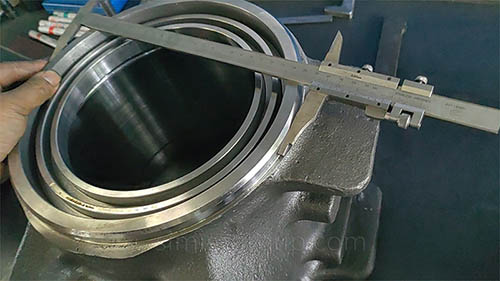
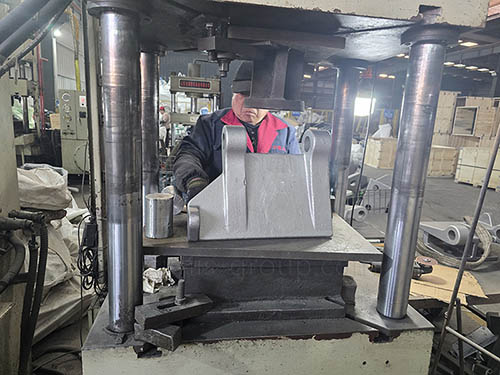
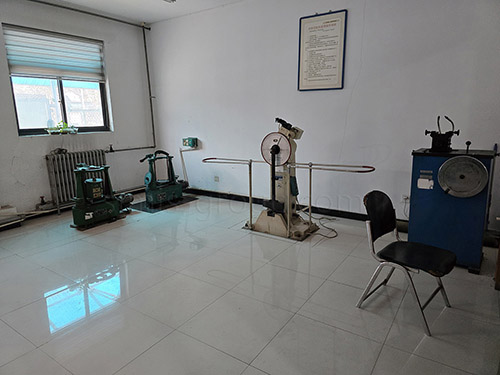
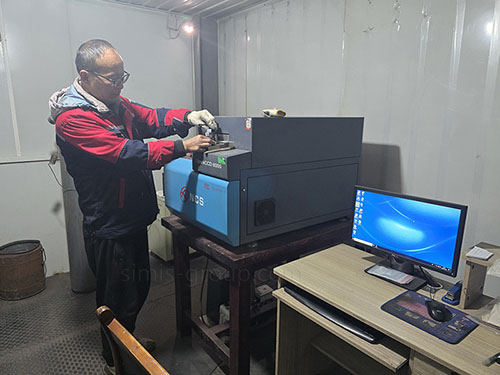
To order custom parts, please email us your design drawings and 3D models. Our team will review the detailed part parameters and the 3D model to provide you with an accurate quote.

